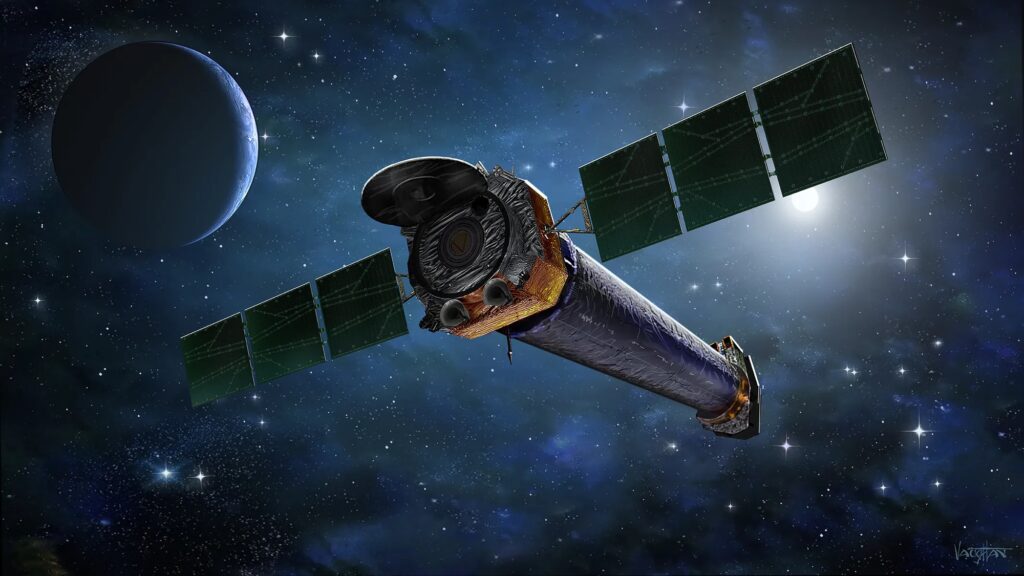LONDON — A NASA committee concluded there is no way to continue operating the Chandra X-ray Observatory at the reduced funding level proposed by NASA in its 2025 budget proposal.
NASA established the Operations Paradigm Change Review (OPCR) committee this spring to look at ways of reducing the costs of operating Chandra and the Hubble Space Telescope as part of broader efforts to deal with a billion-dollar shortfall in agency science funding. The fiscal year 2025 budget proposal included a 40% cut in Chandra’s budget, with further reductions through 2029, while cutting Hubble’s budget by 10% in 2025.
Astronomers strongly opposed the proposed cuts, particularly for Chandra. They argued that the reductions would effectively shut down the telescope, a conclusion backed by Patrick Slane, director of the Chandra X-Ray Center, in an open letter shortly after the release of the budget proposal.
The OPCR concurred. “The committee agreed that the continuation of a scientifically viable Chandra mission is not possible within the funding guidance,” said Rob Kennicutt, an astronomer from the University of Arizona and Texas A&M University who served on the review committee, in a July 23 presentation at a meeting of the Astrophysics Advisory Committee, or APAC. “This is a serious threat to the observatory.”
Shutting down Chandra was one of four options presented to the OPCR by the Chandra team and the only one, he said, that fit within NASA’s proposed budget profile. Three others would keep Chandra going with reduced capabilities and with budgets higher than what NASA proposed but below current levels.
“We think it’s possible to run Chandra for less money” than today, he said, “but more than what they were given.”
One of those options, called Option 2, would cut $20 million from Chandra’s current annual budget of about $69 million. It would eliminate some observing modes and one instrument, the High Resolution Camera, and end a general observing program. Chandra would be limited to a series of specific observing programs, such as “synergy” observations with other missions. That would cut overall observing time by 50%.
“You’re getting half of the data in terms of integration time, but you are preserving very important, unique capabilities,” he said of that option. “We were impressed with this.”
Two other options would make smaller cuts to Chandra operations, preserving general observing time and other capabilities, but with also smaller budget cuts.
The review of Hubble options offered more flexibility because of the smaller magnitude of the budget cuts. Kennicutt said three options all fit within the spending profile in the budget proposal, while a fourth “overguide” option would preserve more capabilities but not meet the budget target.
One approach, called Option A, would reduce funding for general observer programs for Hubble. Option B would instead eliminate some observing modes for Hubble, while Option C would reduce mission operations costs, an approach he said could increase risks for telescope operations.
All the options would cut two observing modes on Hubble, including infrared observations that are now redundant with the James Webb Space Telescope. They would make other cuts to Hubble activities, like reducing outreach activities and eliminating some tools used to process data. Those efforts would save a few million dollars, Kennicutt said.
The OPCR reviewed and assessed the options but provided no recommendations to NASA. However, he said that if the OPCR had been asked for recommendations, it would have strongly opposed the Chandra option to shut down the telescope.
Kennicutt said he was personally concerned about options that cut general observation activities with the telescopes that can benefit early career researchers in particular. “That means you’re eating the seed corn of your profession,” he said. “This is not trivial.”
NASA is now reviewing the options for Chandra and Hubble, said Mark Clampin, director of NASA’s astrophysics division, at the APAC meeting. He said the agency’s goal is to announce NASA’s plans for changing Chandra and Hubble operations in mid-September, likely through a virtual town hall meeting. That timing, he said, will also be dependent on the overall budget process.
Earlier in the meeting, he emphasized that NASA did not want to shut down either telescope but needed to free up money currently spent on them. “This is a zero-sum-game discussion. If we continue to operate Hubble and Chandra at the previous levels, we will be canceling something else,” he warned, or cutting research funding or international partnerships. “There are no easy answers here.”
At the same time, the Chandra X-Ray Center and Space Telescope Science Institute, which handle science operations of Chandra and Hubble respectively, are planning for layoffs to reduce costs in line with NASA’s budget profile, moves that could involve dozens of people and which could take effect as soon as September.
That comes even though it is likely that Congress will not pass a final fiscal year 2025 spending bill until months later. “We cannot wait,” Clampin said.
Members of APAC expressed continued frustration with process during the meeting, held 25 years to the day after the launch of the STS-93 shuttle mission that deployed Chandra. The OPCR was a relatively quick, closed review, and APAC, chartered to provide advice to NASA’s astrophysics program, was not involved or requested to weigh in on the review.
One public comment submitted during the meeting asked what the point of the OPCR was, suggesting NASA had already decided what it will do with Chandra and Hubble. Clampin responded that he valued the insights provided by that committee and agreed to have the results briefed at the APAC meeting. “But, the budget process goes on,” he said, “and the reason we needed to this review in this way was because it had to fit into the budget process.”
>>> Read full article>>>
Copyright for syndicated content belongs to the linked Source : SpaceNews – https://spacenews.com/review-concludes-proposed-nasa-budget-cuts-would-end-chandra/
